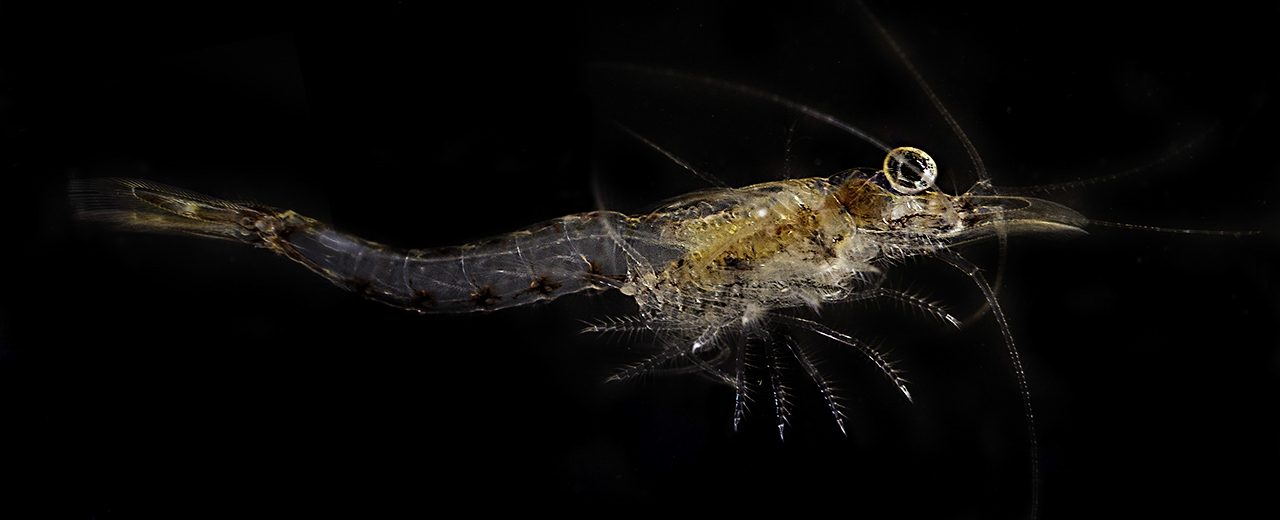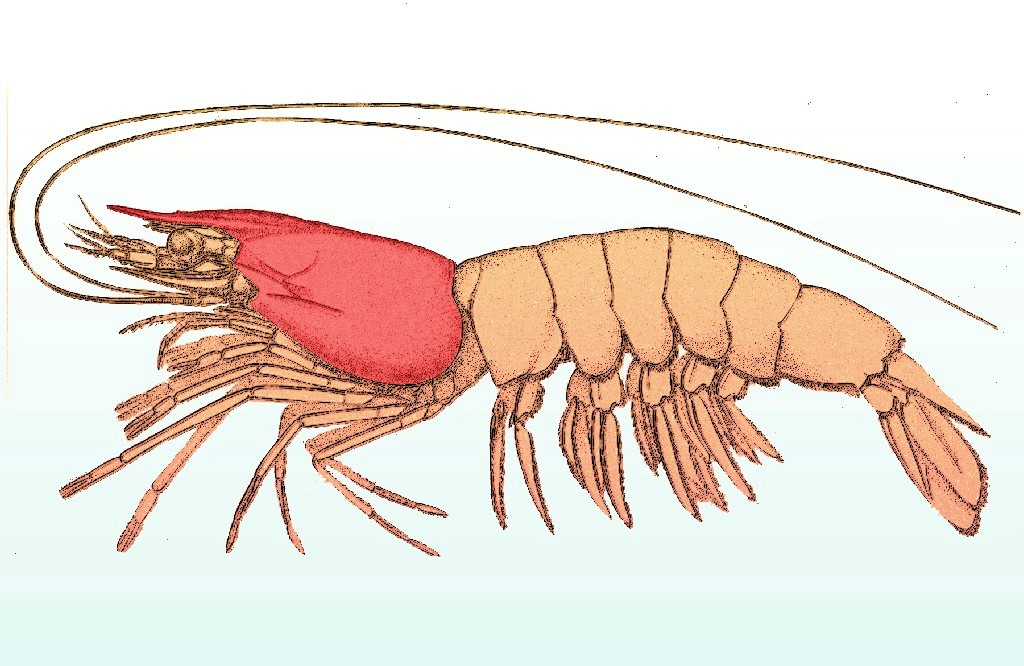|
Mysis
''Mysis'' is a genus of mysid crustaceans in the family Mysidae, distributed mainly in the coastal zone of the Arctic and high boreal seas. Several species also inhabit northern freshwater lakes and the brackish Caspian Sea. Fifteen species are recognized. Body lengths range from . The freshwater taxa of the genus have been referred to as "glacial relicts", and they comprise four closely related species, most of which also live in brackish water. '' Mysis relicta'' is a freshwater species from boreal lakes of Northern Europe, also present in the Baltic Sea. ''Mysis salemaai'' is another North European and Baltic Sea taxon. ''Mysis segerstralei'' is a fresh- and brackish-water species of the Eurasian and North American Arctic and sub-Arctic. The North American lakes, including the Great Lakes, are inhabited by ''Mysis diluviana''. Various species of Mysis are found in lakes of the South Swedish highlands, like Lake Sommen, that were never connected to the sea or the Baltic Ice ... [...More Info...] [...Related Items...] OR: [Wikipedia] [Google] [Baidu] |
Mysidae
Mysidae is the largest family of crustaceans in the order Mysida, with over 1000 species in around 170 genera. Characteristics Members of the family Mysidae are distinguished from other mysids by the fact that the first pereopod (walking leg) has a well-developed exopod (outer branch), the carpopropodus of the endopod (inner branch) of the 3rd to 8th pereopods is divided into sub-segments and there are statocysts on the endopod of the uropod Uropods are posterior appendages found on a wide variety of crustaceans. They typically have functions in locomotion. Definition Uropods are often defined as the appendages of the last body segment of a crustacean. An alternative definition sugge ...s (posterior appendages). Female petalophthalmidans have two or three oostegites (flexible bristly flaps) forming the base of the marsupium or brood pouch under the thorax, apart from the subfamily Boreomysinae, which has seven pairs of oostegites. Subfamilies and genera The following subfami ... [...More Info...] [...Related Items...] OR: [Wikipedia] [Google] [Baidu] |
Mysida
Mysida is an order (biology), order of small, shrimp-like crustaceans in the malacostracan superorder Peracarida. Their common name opossum shrimps stems from the presence of a Brood pouch (Peracarida), brood pouch or "marsupium" in females. The fact that the Crustacean larvae, larvae are reared in this pouch and are not Motility, free-swimming characterises the order. The mysid's head bears a pair of stalked eyes and two pairs of antennae. The thorax consists of eight segments each bearing branching limbs, the whole concealed beneath a protective carapace and the abdomen has six segments and usually further small limbs. Mysids are found throughout the world in both shallow and deep marine waters where they can be Benthos, benthic or pelagic, but they are also important in some fresh water and brackish water, brackish ecosystems. Many benthic species make Diel vertical migration, daily vertical migrations into higher parts of the water column. Mysids are filter feeders, omnivores ... [...More Info...] [...Related Items...] OR: [Wikipedia] [Google] [Baidu] |
Mysis Relicta
''Mysis relicta'' is a shrimp-like crustacean in the Mysida order, native to lakes of Northern Europe and to the brackish Baltic Sea. Appearance Mysis is a small, transparent shrimp-like crustacean, of less than 2.5 cm length. It has two pairs of relatively long antennae, associated with rounded antennal plates; large, stalked compound eyes; the thorax covered by a coat-like carapace; a muscular, cylindrical abdomen; and a tail fan featuring a telson with a v-shaped terminal cleft. Reproducing females bear a prominent brood pouch (marsupium) between their thoracal legs. The pleopods (abdominal legs) of Mysis are reduced, except for a specialized pair of mating legs in males. Distribution The distribution of ''Mysis relicta'' is restricted to previously glaciated regions in Northern Europe, including northwest Russia, Finland, Sweden, southeast Norway, and parts of Germany, Poland, and Lithuania. Previously ''M. relicta'' was treated as a circumpolar taxon also present ... [...More Info...] [...Related Items...] OR: [Wikipedia] [Google] [Baidu] |
Crustacean
Crustaceans (from Latin meaning: "those with shells" or "crusted ones") are invertebrate animals that constitute one group of arthropods that are traditionally a part of the subphylum Crustacea (), a large, diverse group of mainly aquatic arthropods including decapods (shrimps, prawns, crabs, lobsters and crayfish), seed shrimp, branchiopods, fish lice, krill, remipedes, isopods, barnacles, copepods, opossum shrimps, amphipods and mantis shrimp. The crustacean group can be treated as a subphylum under the clade Mandibulata. It is now well accepted that the hexapods (insects and entognathans) emerged deep in the Crustacean group, with the completed pan-group referred to as Pancrustacea. The three classes Cephalocarida, Branchiopoda and Remipedia are more closely related to the hexapods than they are to any of the other crustaceans ( oligostracans and multicrustaceans). The 67,000 described species range in size from '' Stygotantulus stocki'' at , to the Japanese ... [...More Info...] [...Related Items...] OR: [Wikipedia] [Google] [Baidu] |
Mysis Diluviana
''Mysis'' is a genus of mysid crustaceans in the family Mysidae, distributed mainly in the coastal zone of the Arctic and high boreal seas. Several species also inhabit northern freshwater lakes and the brackish Caspian Sea. Fifteen species are recognized. Body lengths range from . The freshwater taxa of the genus have been referred to as " glacial relicts", and they comprise four closely related species, most of which also live in brackish water. '' Mysis relicta'' is a freshwater species from boreal lakes of Northern Europe, also present in the Baltic Sea. ''Mysis salemaai'' is another North European and Baltic Sea taxon. ''Mysis segerstralei'' is a fresh- and brackish-water species of the Eurasian and North American Arctic and sub-Arctic. The North American lakes, including the Great Lakes, are inhabited by '' Mysis diluviana''. Various species of Mysis are found in lakes of the South Swedish highlands, like Lake Sommen, that were never connected to the sea or the Baltic ... [...More Info...] [...Related Items...] OR: [Wikipedia] [Google] [Baidu] |
Mysis Amblyops
''Mysis'' is a genus of mysid crustaceans in the family Mysidae, distributed mainly in the coastal zone of the Arctic and high boreal seas. Several species also inhabit northern freshwater lakes and the brackish Caspian Sea. Fifteen species are recognized. Body lengths range from . The freshwater taxa of the genus have been referred to as "glacial relicts", and they comprise four closely related species, most of which also live in brackish water. '' Mysis relicta'' is a freshwater species from boreal lakes of Northern Europe, also present in the Baltic Sea. ''Mysis salemaai'' is another North European and Baltic Sea taxon. ''Mysis segerstralei'' is a fresh- and brackish-water species of the Eurasian and North American Arctic and sub-Arctic. The North American lakes, including the Great Lakes, are inhabited by ''Mysis diluviana''. Various species of Mysis are found in lakes of the South Swedish highlands, like Lake Sommen, that were never connected to the sea or the Baltic Ice ... [...More Info...] [...Related Items...] OR: [Wikipedia] [Google] [Baidu] |
Cladistics (journal)
''Cladistics'' is a bimonthly peer-reviewed scientific journal which has published research in cladistics since 1985. It is published by Wiley-Blackwell on behalf of the Willi Hennig Society. ''Cladistics'' publishes papers relevant to evolution, systematics, and integrative biology. Papers of both a conceptual or philosophical nature, discussions of methodology, empirical studies on taxonomic groups from animals to bacteria, and applications of systematics in disciplines such as genomics, paleontology and biomedical epidemiology are accepted. Five types of paper appear in the journal: reviews, regular papers, forum papers, letters to the editor, and book reviews. Its editor-in-chief is Rudolf Meier, who replaced Dennis Stevenson in 2019. According to the ''Journal Citation Reports'', the journal has a 2023 impact factor The impact factor (IF) or journal impact factor (JIF) of an academic journal is a type of journal ranking. Journals with higher impact factor values are con ... [...More Info...] [...Related Items...] OR: [Wikipedia] [Google] [Baidu] |
Carapace
A carapace is a dorsal (upper) section of the exoskeleton or shell in a number of animal groups, including arthropods, such as crustaceans and arachnids, as well as vertebrates, such as turtles and tortoises. In turtles and tortoises, the underside is called the plastron. In botany, a carapace refers to the hard outer cover of a seed which protects the inner embryo. Crustaceans In crustaceans, the carapace functions as a protective cover over the cephalothorax (i.e., the fused head and thorax, as distinct from the abdomen behind). Where it projects forward beyond the eyes, this projection is called a rostrum. The carapace is calcified to varying degrees in different crustaceans. Zooplankton within the phylum Crustacea also have a carapace. These include Cladocera, ostracods, and isopods, but isopods only have a developed "cephalic shield" carapace covering the head. Arachnids In arachnids, the carapace is formed by the fusion of prosomal tergites into a single pl ... [...More Info...] [...Related Items...] OR: [Wikipedia] [Google] [Baidu] |
Telson
The telson () is the hindmost division of the body of an arthropod. Depending on the definition, the telson is either considered to be the final segment (biology), segment of the arthropod body, or an additional division that is not a true segment on account of not arising in the embryo from teloblast areas as other segments. It never carries any appendages, but a forked "tail" called the caudal furca may be present. The shape and composition of the telson differs between arthropod groups. Crustaceans In lobsters, Caridea, shrimp and other Decapoda, decapods, the telson, along with the uropods, forms the tail fan. This is used as a paddle in the caridoid escape reaction ("lobstering"), whereby an alarmed animal rapidly flexes its tail, causing it to dart backwards. Krill can reach speeds of over 60 cm per second by this means. The Induction period, trigger time to optical stimulus (physiology), stimulus is, in spite of the low temperatures, only 55 milliseconds. In th ... [...More Info...] [...Related Items...] OR: [Wikipedia] [Google] [Baidu] |
Olive Tattersall
Olive S. Tattersall (1890 – 1978) was an English carcinologist focusing especially on the Mysidacea family of crustaceans. After holding medical positions in both World Wars, she began making scientific publications in her sixties. Early life She was born Olive Selden Attride on 21 May 1890 at Crowthorne, Berkshire, the youngest child of iron founder William Henry Attride. She studied science at Reading University College from 1907 to 1911, gaining her BSc as an external student at London University, as Reading was yet to gain full university status. She then obtained the Cambridge Teaching Diploma and taught science at Maidenhead Girls' School from 1912 to 1914. During World War I, she served as a nurse at a military hospital in Salford, Lancashire from 1916 to 1916. She then worked as an engineer’s draughtsman at a munition works after her marriage to Walter Medley Tattersall, an employee of Manchester University Museum who was then serving with the Royal Garrison Artil ... [...More Info...] [...Related Items...] OR: [Wikipedia] [Google] [Baidu] |
Mysis Caspia
''Mysis'' is a genus of mysid crustaceans in the family Mysidae, distributed mainly in the coastal zone of the Arctic and high boreal seas. Several species also inhabit northern freshwater lakes and the brackish Caspian Sea. Fifteen species are recognized. Body lengths range from . The freshwater taxa of the genus have been referred to as "glacial relicts", and they comprise four closely related species, most of which also live in brackish water. '' Mysis relicta'' is a freshwater species from boreal lakes of Northern Europe, also present in the Baltic Sea. ''Mysis salemaai'' is another North European and Baltic Sea taxon. ''Mysis segerstralei'' is a fresh- and brackish-water species of the Eurasian and North American Arctic and sub-Arctic. The North American lakes, including the Great Lakes, are inhabited by ''Mysis diluviana''. Various species of Mysis are found in lakes of the South Swedish highlands, like Lake Sommen, that were never connected to the sea or the Baltic Ice ... [...More Info...] [...Related Items...] OR: [Wikipedia] [Google] [Baidu] |



